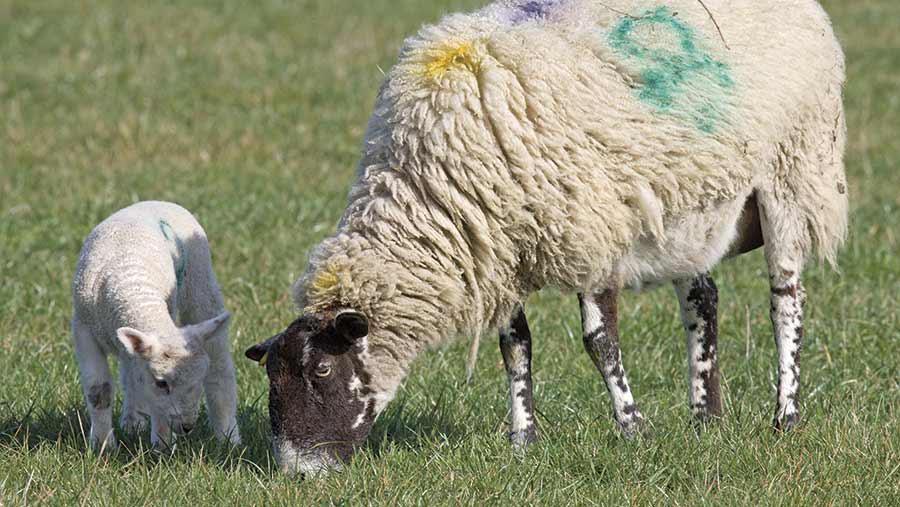Health experts launch new aids for parasite control
 © Tim Scrivener
© Tim Scrivener Sheep farmers and cattle graziers are being urged to ask their vets about a parasite-control package developed by leading experts at the National Animal Disease Information Service (Nadis).
A parasite control planner (PCP) and a parasite forecasting service are now available to assist farmers in the challenge of managing parasites in the face of drench resistance and higher rainfall.
PCPs are free, but only available through vets, who pay a subscription to the whole parasite forecasting service. Charges will be specific to vet practices and services provided with the planners, says Nadis.
A total of 30 vet practices have signed up across the UK already in just two months.
“The idea is to give vets influence over parasite control in the interests of anthelmintic resistance and flock and herd profitability,” says Nadis vet Rebecca Vallis. “We need farmers to ask about this new service.”
See also: Parasite Watch: Farmers share their FEC test success stories
Both the PCP and the forecasting service were launched late last year. The parasite control package includes:
- More detailed forecasting: A more detailed local (40sq km) monthly parasite forecast, branded with the practice details, including new weekly nematodirus updates from March to May, with a predicted peak hatch for each square kilometer.
- Parasite control planners: Interactive pictorial presentations of the year for sheep, beef and dairy farms displaying bespoke information specific to each farm by positioning peel-off stickers on the planner to cater for seasonal and climatic variation, housing and turnout dates and safe pastures on farm.
- Vet presentations: Presentations for farmer meetings to explain the benefits of parasite control planners and how to use them.
Diseases covered by parasite control planners
- Sheep: Coccidiosis, nematodirus/ gut worms, fluke risk and treatment, ectoparasites (blowfly, ticks, lice, scab)
- Beef: Two planners used, one for youngstock and one for the second grazing season. Fluke, nuisance flies, lice, parasitic gastroenteritis, lungworm and coccidiosis.
- Dairy: Youngstock and heifer rearing planner and a dairy herd planner. Fluke, nuisance flies, lice, parasitic gastroenteritis, lungworm and coccidiosis.
Planner is ‘a useful tool’
Independent sheep consultant Kate Hovers has used the planner with five clients and is already seeing the benefits. She will use the PCP on seven farms this year in an antibiotics reduction project.
“The whole idea of the planner is to give a visual picture of the farm’s parasite control plan for external and internal parasites,” says Ms Hovers. “Farmers are finding it helpful – they don’t have to access it through a phone or laptop, they can keep it somewhere safe or pin it to the wall for reference.”
The planner comes at a critical time, as liver fluke and anthelmintic resistance are becoming more widespread, explains Ms Hovers.
She explains that liver fluke is a major issue across Wales this year, with many Welsh flocks in high-risk fluke areas, while triclabendazole (the active licensed against all stages of fluke) resistance is a major talking point for the industry.
Download an example PDF of the Nadis sheep parasite planner
Forecasting service
Nadis’ monthly parasite forecasting service is being improved. Regional reporting is now more specific, based on a 40sq km grid, allowing farmers to choose the most pertinent area from 190 grid boxes across the UK.
Monthly updates will be embellished with weekly nematodirus updates from April to May.
Parasite forecasting
There are three main functions of the improved Nadis parasite forecasting service.
Reporting: Weekly and monthly reports across the UK on 190 40sq km blocks. Farmers subscribed to the service can receive monthly parasite forecasts or disease alerts on the challenges faced in their local grid area.
Measuring: Using weather station data (rainfall, soil moisture content) and measuring soil temperature to 30cm deep.
Predicting: Giving monthly updates focusing on timely diseases and weekly nematodirus updates on temperature from March to May.
